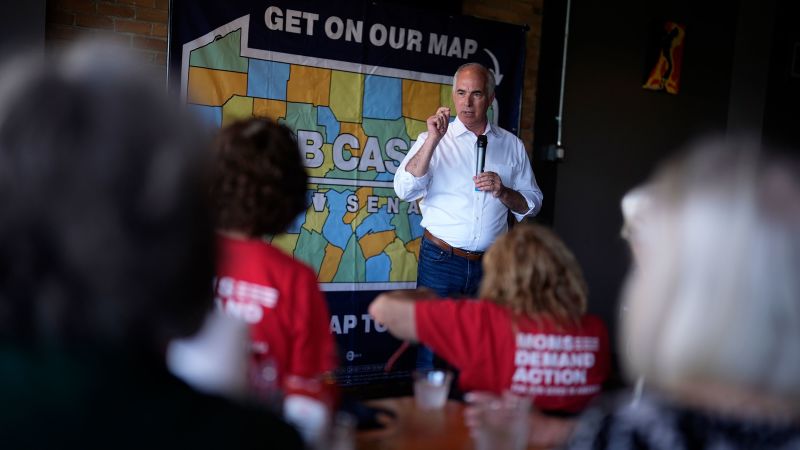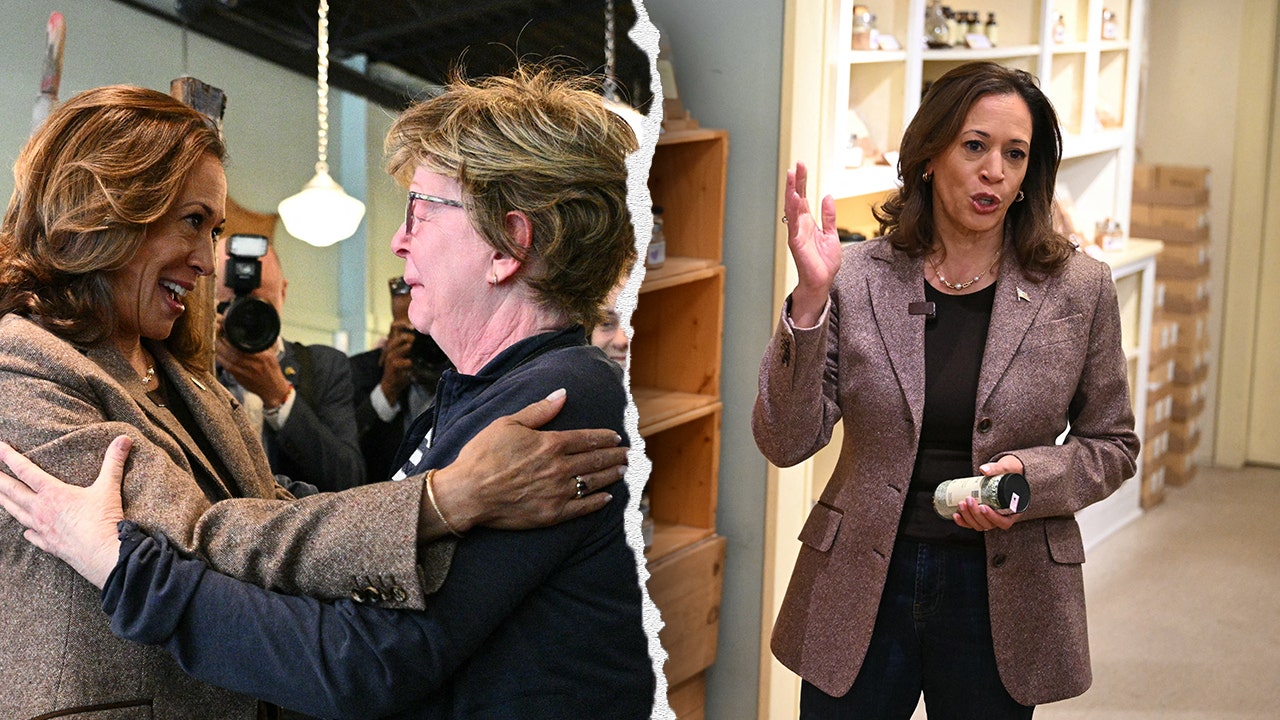Lifestyle
What does it take to style someone like Beyoncé? Take a cue from Zerina Akers
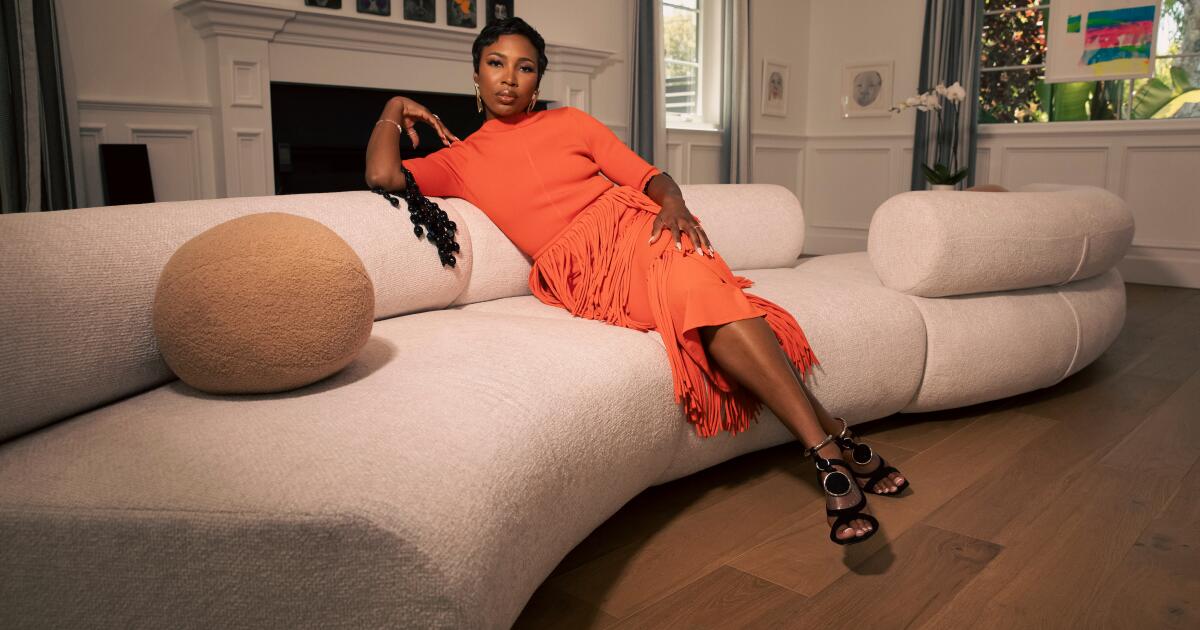
How does one become a stylist to the stars? When you hear the story of Zerina Akers, stylist to Beyoncé, Megan Thee Stallion and Karol G, you learn that success not only takes devoted work but also genuine community building. One builds a career alongside others.
Visual artist Maria Maea has had the unique experience of following Akers since the beginning of her professional career, when they worked together in production. Both have since become successful artists in their fields. Curious to reflect on what this journey takes and has been like, Maea reached out to Akers to have a conversation. The timing coincides with Akers’ newly launched Saint Helen’s House, a social club and showroom in Tarzana that will serve as a space for young stylists and women across industries to socialize, find outfits that feel good for their bodies and appreciate art — Akers collaborated with Hammer Museum curator Erin Christovale for the space’s first of many exhibitions. Saint Helen’s House is a natural outgrowth of Akers’ first business venture, Black Owned Everything, which she describes as a digital marketplace that has “become a launching pad for Black entrepreneurs and creators” and a way to break barriers and share information with people.
After years of collaborating with others, Akers is starting to feel reciprocation from her community with the opening of Saint Helen’s House. In her words to Maea, “They’re able to show up for me in a real way.”
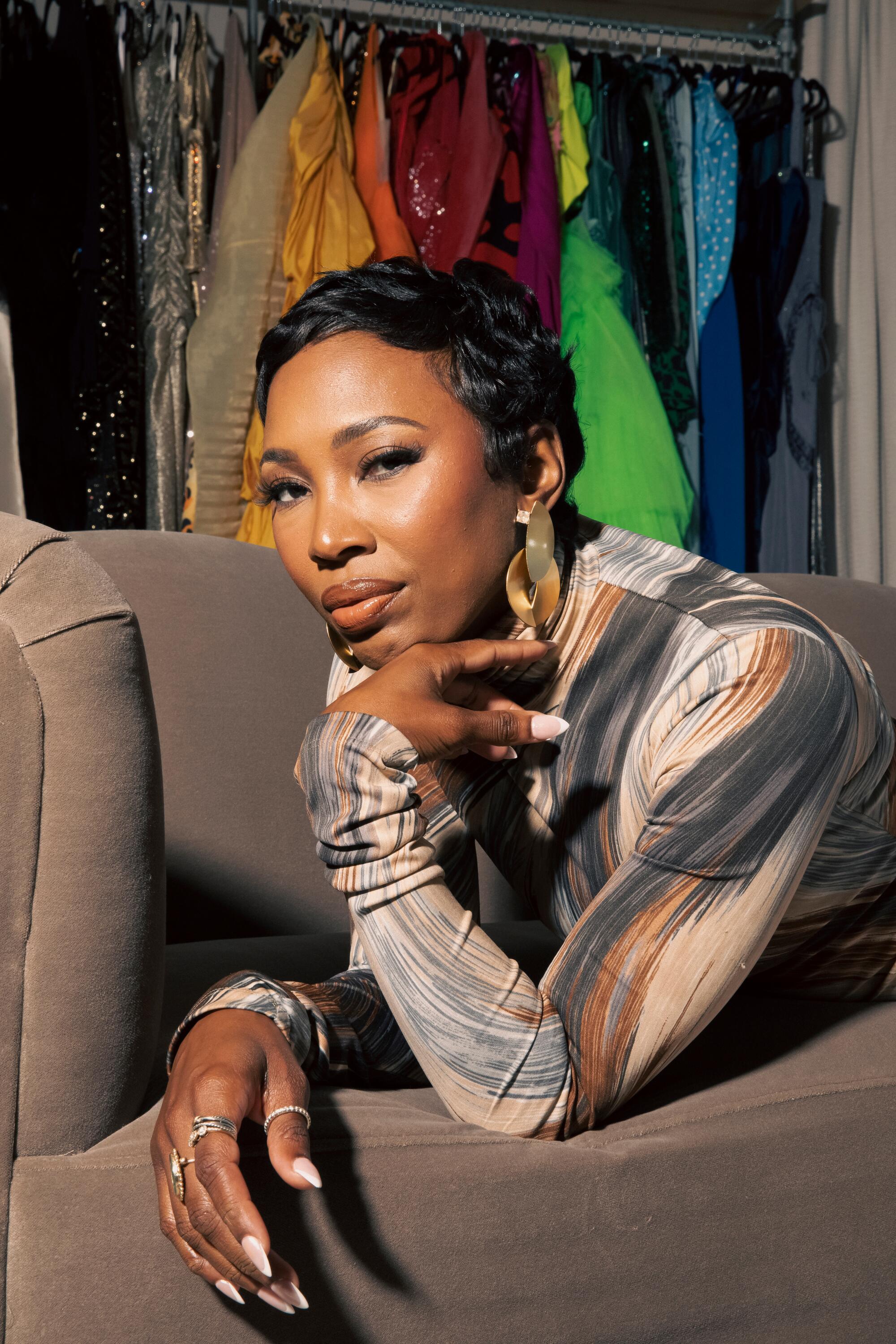
“Where I’m seeing women now, where I’m connecting with a lot of women and people now — they’re at the top of their game,” says Akers. “We’re able to pull together our resources and create something new.”
Maria Maea: What are some of your earliest memories of fashion?
Zerina Akers: Oh, my goodness. My earliest memories of fashion would be getting a red polka dot dress for Easter and refusing to take it off.
MM: I love it.
ZA: There are pictures of me from about ages 3 to 5, and I’m still wearing the same dress. They had to hide the dress from me.
“My earliest memories of fashion would be getting a red polka dot dress for Easter and refusing to take it off.”
— Zerina Akers
Back then, I didn’t realize we were in the quote-unquote ghetto or in the hood or anything — I didn’t really know the difference. But in hindsight, I think fashion and what you wear held a lot of power — how you showed up in a room and the hierarchy of social anything, like wearing the latest sneakers and the latest trends put you in a powerful position in a room. Eventually, in high school, I started making my own clothes, and people would wear them and buy them. Back then, I thought the only way to work in fashion was to become a fashion designer, so I started studying fashion design, but quickly realized I didn’t have the patience to sew a button-down shirt. So I switched to marketing and was able to discover styling through my first internship at W magazine.
MM: What was the moment where you knew that this was your path, where you decided, “OK, I can grow in this space”?
ZA: I never really felt like I was cut out for a 9 to 5. I always knew I wanted to work for myself. Going into my very first internship at W, I was trying to find myself, trying to see myself, though I didn’t necessarily see myself in that moment — I was the only Black girl in the office as an intern. I just started to explore assisting bigger stylists, and I was always taught to make your mistakes under an umbrella. So I took the path of assisting and interning and wanting to learn as much as I could and go from there. I started doing commercial styling, and that’s really what I think set it in for me. I was assisting stylist Ray Oliveira, and these jobs are very different than the high-fashion jobs. You got off at 6. You came in at a certain time and ended. I saw single women that were working and able to buy houses and make a life for themselves without necessarily being married or coming from a rich family. I was able to see a lot of women take hold of their own lives and that, for me, resonated, while still being able to be creative and create your own hours on your own time. I kept going after that.

Zerina wears Balenciaga top, Dries Van Noten skirt, Schutz shoes.
MM: You and I have known each other for almost a decade in the industry. I thought a lot about the magic of women working collectively and the trust that we can build and the communities that we can create, that get forged through our labor, but also, as you said, all these moments of agency for women of color. Thinking back to your early days as an artist, how did you create trust with your vision and your voice in these spaces? How did you begin to build yourself up?
ZA: I assisted for a while, but when I went to go on my own, I was fortunate enough that my first client as an independent lead stylist was Beyoncé. In hindsight, looking back, the goal was for me to step into it, because often, people are more afraid of success than they are of failure. That being said, it still took me a while to build my confidence, I was kind of doing it as I was learning the job.
One of those first moments for me was the hat look in the “Formation” video — I just remember fighting for that video, and I really wanted to work on it, so I would pitch all these ideas. But I was just the closet girl; they didn’t necessarily think I could take on such a large project. So I did a couple of fittings, and Beyoncé liked this one look that I did specifically and decided to put it in the video. And that look then became almost a symbol for a movement, and a symbol for an entire music era of hers. That, I think, is when I realized I was contributing to creating things that were going to outlive me someday. And then, what do you do with that? Working with someone like Beyoncé, who has seemingly done it all, and worn it all, how do you create new silhouettes? But more important, how do you utilize the platform? For me, it was always important to reach out to independent designers and allow them space on that platform, so it wasn’t just all seemingly high-end Parisian, Italian luxury. She kept her ear to the street, and just that simple gesture of allowing a lot of the younger talents to take space, you have the success of designers like Sergio Hudson and Romeo Hunte. Also Sarah [Diouf] with her brand Tongoro out of Dakar, Senegal. Beyoncé wore her garments twice one year, just on vacation, and Sarah went from employing seven people to employing 50 people. You can’t measure that kind of reach, where you’re able to shift the trajectory of someone’s life and their success. That’s really powerful.
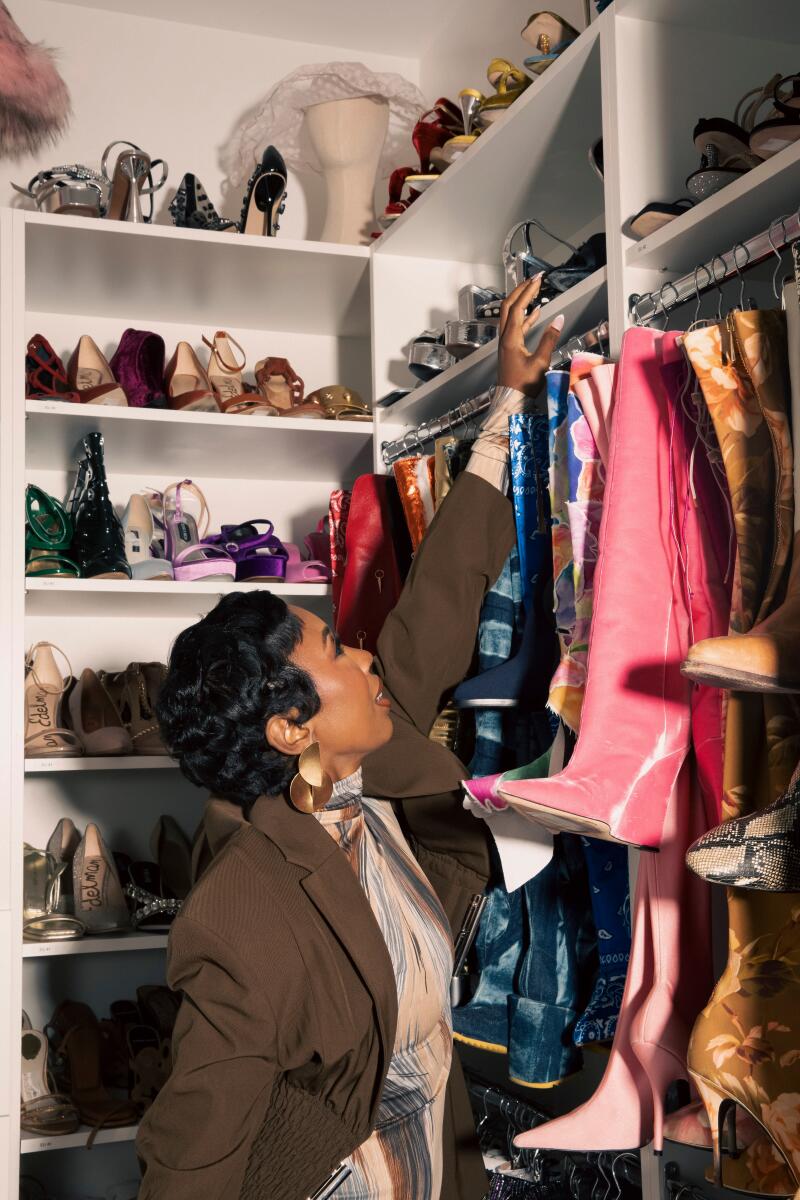
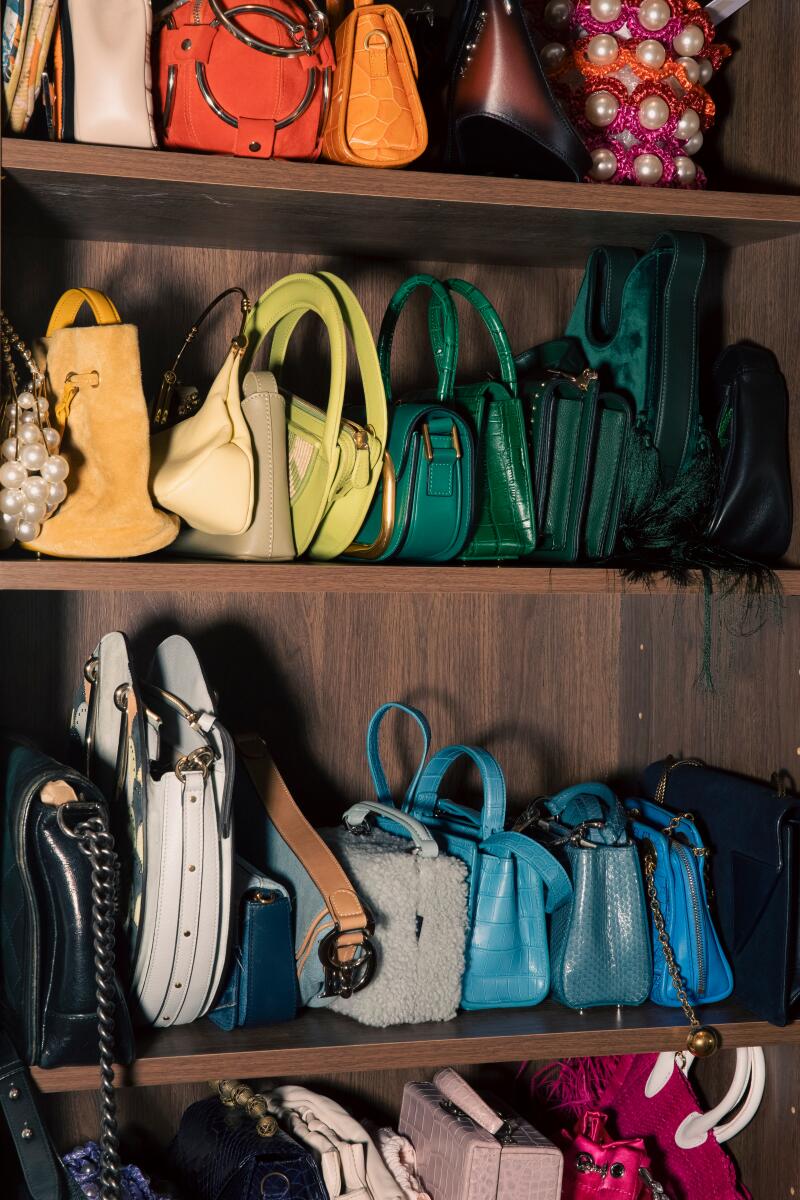
Zerina Akers at Saint Helen’s House.
MM: With Saint Helen’s House, you talked about it becoming an art space and a social club. Why have you decided to make L.A. the home for this project? What is it about this moment in your life and also this location?
ZA: I relocated to L.A. about seven years ago, and it’s been home ever since. When you really get to know Los Angeles, like the real Los Angeles, there’s a certain family unit that’s really beautiful. The way that there’s legacy community and people generationally helping each other — you don’t really find that in a lot of cities, and so that’s always inspired me as I’ve gotten to know the real L.A. But then, juxtaposing that with being in Hollywood, having experienced firsthand the industry, it can be very exclusive. That inclusion, giving younger stylists access that [they] typically may not get to standard showrooms, giving women — the backbone of this industry is often a lot of women [and] they too are going to events, going to red carpets. Where’s their look? They want to look good, they want to feel good. Opening the doors to everyone has changed the game, because it’s just opened a floodgate of community and networks that we are able to build on at the showroom.
I decided to go into more of a residential space to maintain the intimacy of what we were offering our clients, to be able to forge that community there in the space. With Saint Helen’s house, as I went through escrow closing on the space, all of these other ideas came to mind. I have a deep love for the art community as a whole, and the business of art is also very interesting to me, and how artists develop, how their work evolves and how people get to know them. There is power for me in also investing in art. I wanted to offer that to the clients that are coming in the showroom. I wanted them to have their ears to the streets and feel like they’re ahead of the curve in getting to know a lot of these artists. You actually introduced me to Erin Christovale, and we were able to work on this and bring this to life. “Glimpses of the Self” is the first gallery opening of many. I plan to do exhibitions quarterly.
MM: Can you speak a little bit on “Glimpses of the Self”? You had wall text up about seeing yourself, which was such a powerful gesture because so much of the showroom is about getting to embody yourself.
ZA: The combination of artists that we have, like yourself — you have a beautiful woven piece that for me resembled an eye — you have Adee Roberson, who is capturing family and people in joy, in moments of intimacy, to February James, her [portraits capture] some of the more somber moments, which kind of really forces you to reflect on yourself. I just wanted people to come in and see themselves. I thought that was just a great way to open the space.
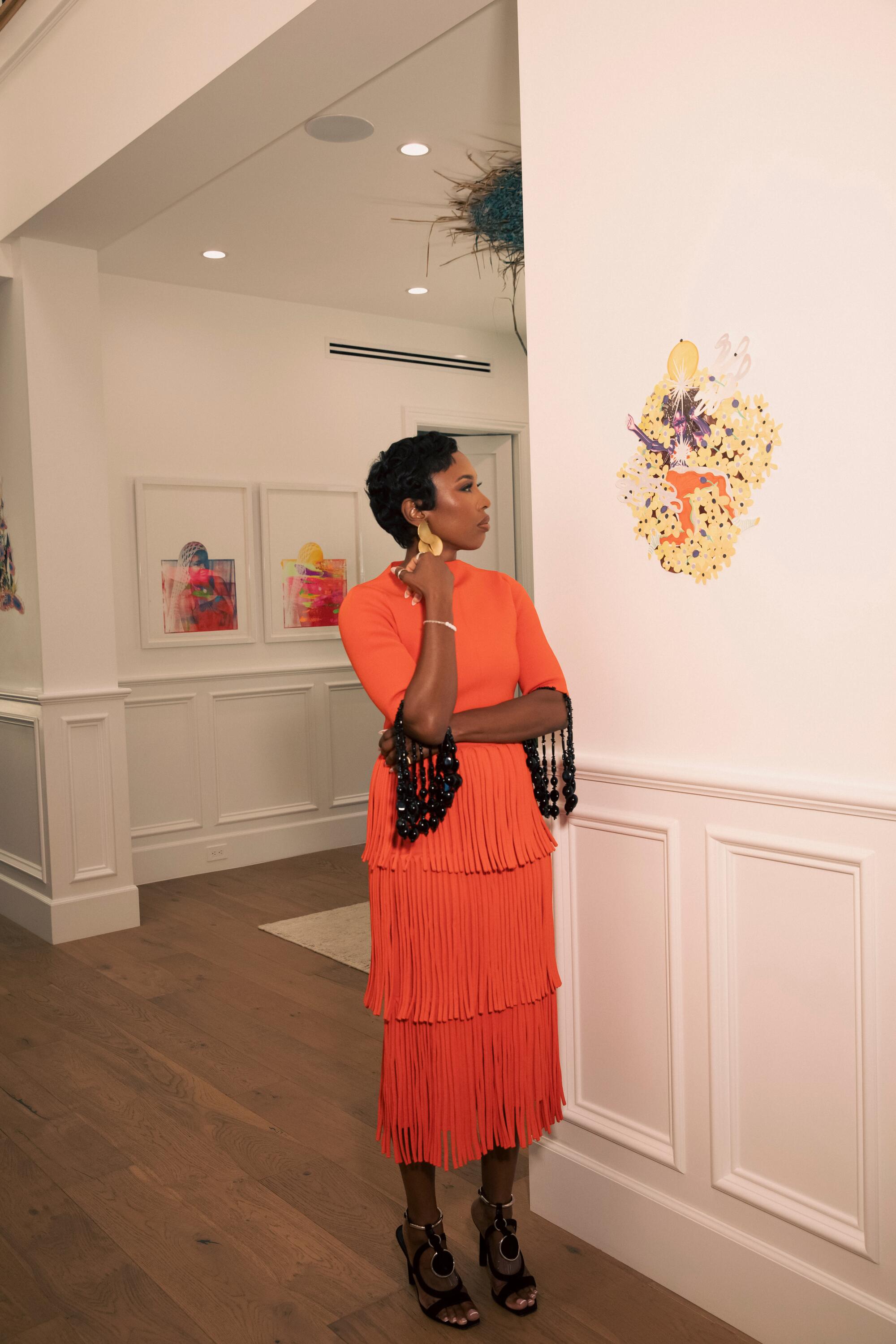
Zerina wears Proenza Schouler top and skirt, Balmain heels.

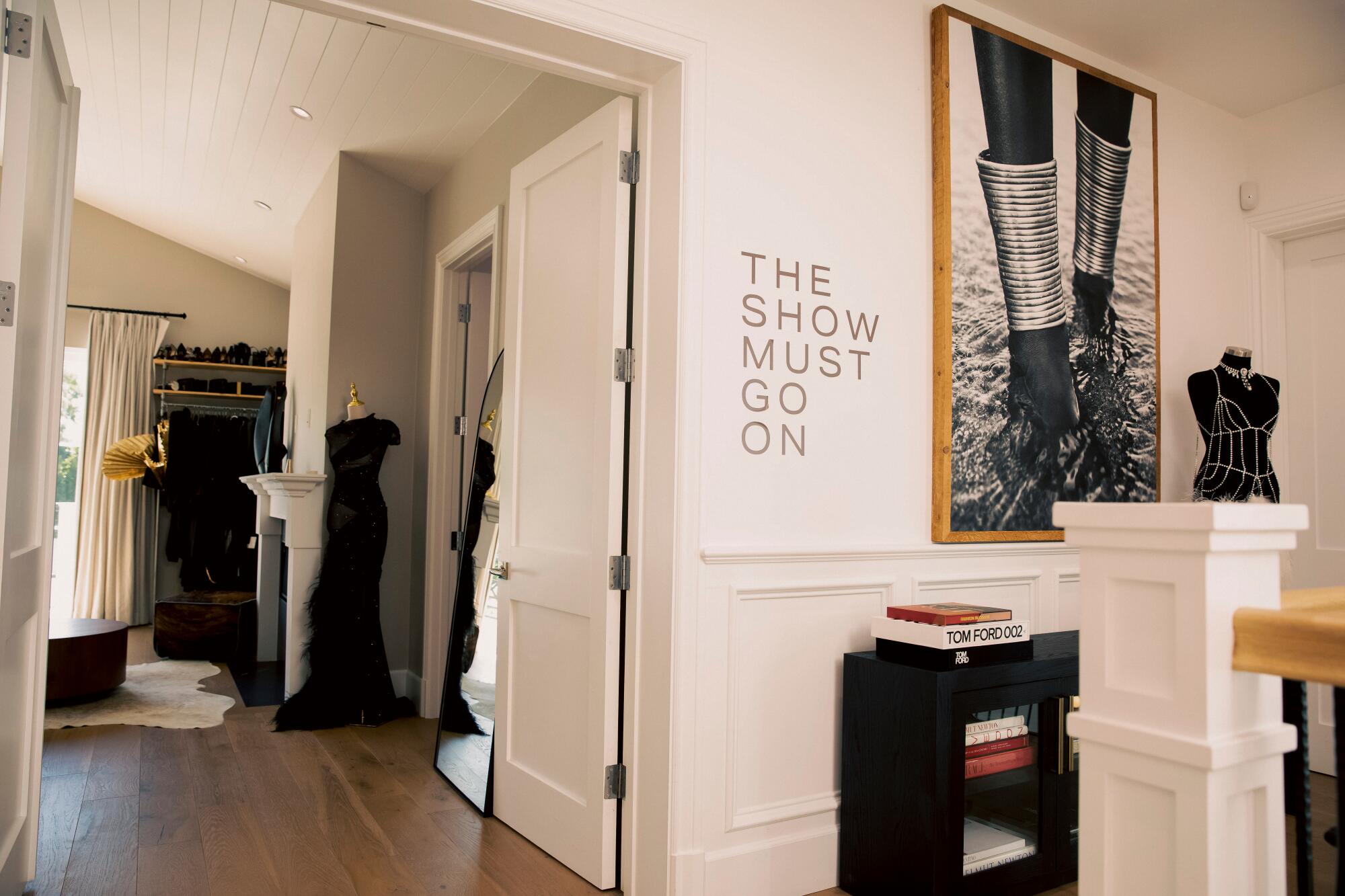
Saint Helen’s House, Akers’ new social club and showroom in Tarzana that will serve as a space for young stylists and women across industries to socialize, find outfits that feel good for their bodies and appreciate art.
MM: What advice would you give to a younger self or up-and-coming young women who are navigating these spaces?
ZA: First and foremost: Take the time to learn your industry and your business. Often, we’ve gotten caught up in the 120 characters of life and just how quickly social media is moving. I think people aren’t necessarily taking the time to learn their industry and really learn the business they’re being a part of. It’s fun wanting to learn a couple of things and then go out on your own, but if you’re not managing your bit as well, you’re not going to be able to keep those clients — they’re making sure [that] you have clean business, that you’re in good financial standing, to really be ready to take on the growth that you see. And do right by people, because in three short years, that intern can be your boss. Just always be decent to people.
MM: I want to bring up the value of women working together. There’s so much energy that’s forged around being on a job and showing who you are through your labor, how you show up. A lot of my friendships have been built in that space. Can you speak about some of the histories you’ve had working with different people along your path?
ZA: I’m seeing a point where so many people around me have evolved and morphed into something totally different than how we met. Even us, for example. You were this production master and now you’re this flourishing artist, and you’ve evolved into something so very different. Where I’m seeing women now, where I’m connecting with a lot of women and people now — they’re at the top of their game. We’re able to pull together our resources and create something new and amplify whatever we’re doing and help each other. It continues to be so powerful for me, for us to support each other, especially in this climate, where it seems like we’re being targeted. I think it’s important to come together and stay together.
Makeup Brandy Allen
Hair Diane Griffin
Location Saint Helen’s House

Zerina wears vintage Celine dress, Acne Studios jacket, The Row heels.
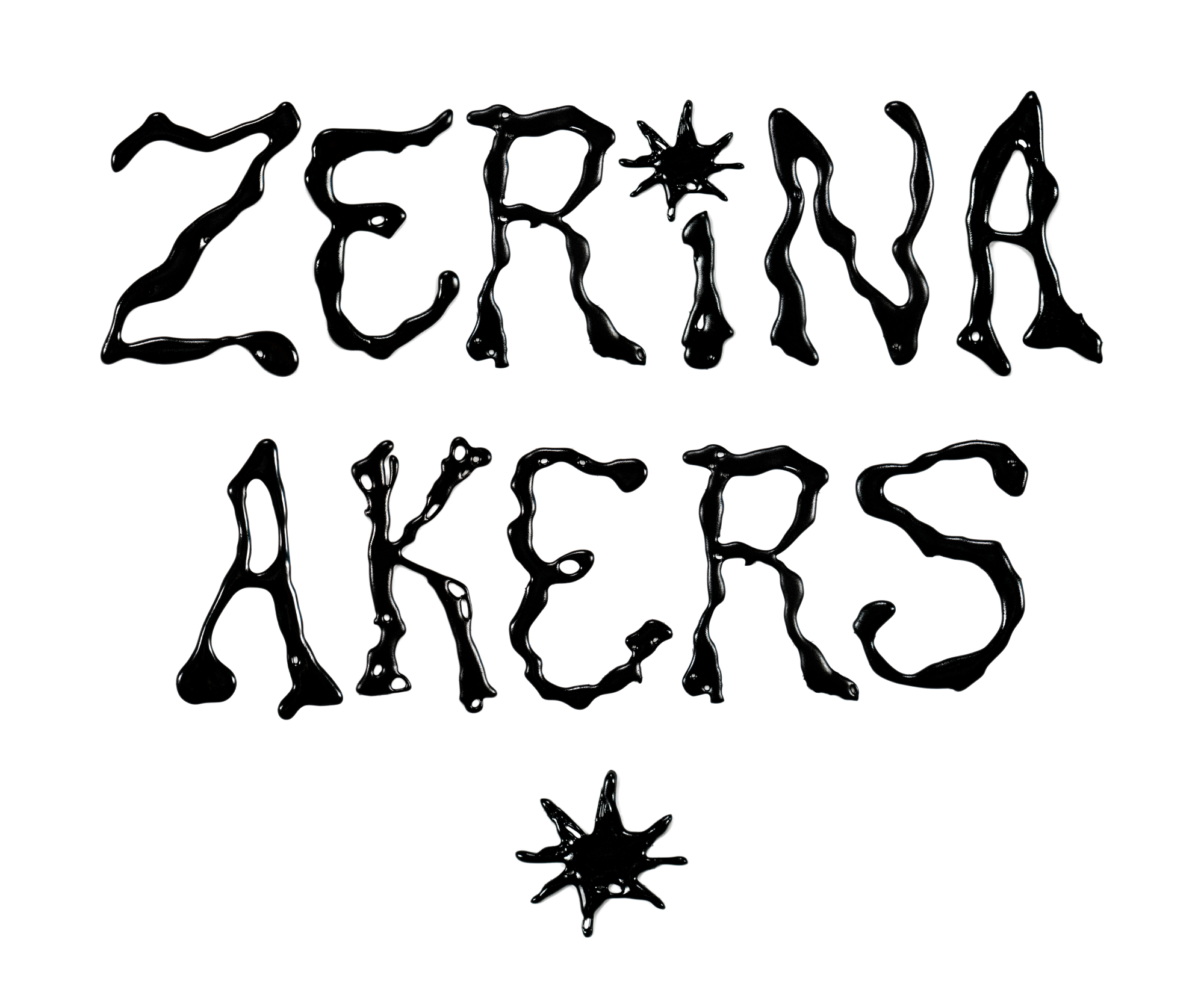

Lifestyle
'The Perfect Couple' is 6 episodes of simple, soapy fun

Nicole Kidman as Greer Winbury in The Perfect Couple.
Courtesy of Netflix/Netflix
hide caption
toggle caption
Courtesy of Netflix/Netflix
The first question raised by the new Netflix series The Perfect Couple is this: Why does Nicole Kidman continue to play a string of chilly, wealthy mothers with secrets? Big Little Lies, The Undoing, Expats and now this. Maybe she just likes beautiful settings and great clothes?

Here, in a series based on the Elin Hilderbrand novel, Kidman plays Greer Garrison Winbury (a great name for a rich jerk), a successful novelist whose big family is gathering at their Nantucket estate for the wedding of their son Benji (Billy Howle) to his fiancée Amelia (Eve Hewson).
The rehearsal dinner goes well, but the morning after goes less well, in that a body washes up on the beach. This is the part where you can easily be forgiven for saying “DUN-DUN-DUUUUUN!” out loud. What follows is a whodunit in which family secrets are revealed, dirty laundry is not only aired but run all the way up the flagpole, and yes, you eventually learn how that body got there.
Also in attendance for the wedding weekend are Greer’s fratty, bratty son Thomas (Jack Reynor) and his wife, Abby (Dakota Fanning); her somewhat hapless younger son Will (Sam Nivola); Amelia’s bestie, Merritt (Meghann Fahy); the best man, Shooter (Ishaan Khatter); and extremely French family friend Isabel (Isabelle Adjani).

Donna Lynne Champlin, left, as Nikki Henry, and Michael Beach as Dan Carter.
Liam Daniel/Netflix
hide caption
toggle caption
Liam Daniel/Netflix
One of the smartest decisions about this show is the casting of law enforcement: local police chief Dan Carter (Michael Beach) and detective Nikki Henry (Donna Lynne Champlin). Beach is a reliably appealing, relatable, flexible actor who can be very serious or very funny; Champlin was brilliant as Paula on Crazy Ex-Girlfriend and brings the perfect touch of disbelief as Nikki, who is not a local, uncovers more and more about how these people actually live. Without humor, this show would be no fun at all; it could not stand up as a super-serious drama, or it would just be … Big Little Lies again. Instead, it’s a cocked-eyebrow mystery that hangs on to its emotional throughlines (it really is sad about that body!) while character reactions underscore the fact that it doesn’t intend to be taken too seriously.

It’s also enormously helpful that it’s only six episodes long. If this were eight episodes, or (heaven forfend) 10, it would drag, and the numerous red herrings would become exhausting. But it moves along at a solid clip, and it continues to reveal information (some of which I genuinely did not see coming), and then it solves the mystery — fairly, by telling you who, in fact, is the perpetrator. (Spoiler: It departs, for the record, from Hilderbrand’s ending, which I did not discover until after I’d watched it and which honestly would have been an entirely different show — and probably would have enraged me.)
It’s a juicy, nifty little end-of-summer mystery, where all the people are beautiful and all the arguments are public and sloppy, where the house is gorgeous and the drinks are bottomless. It’s not much more than that, but it’s not less than that, either. And Beach and Champlin, in particular, can team up in a mystery story every summer, as far as I’m concerned.
This piece also appeared in NPR’s Pop Culture Happy Hour newsletter. Sign up for the newsletter so you don’t miss the next one, plus get weekly recommendations about what’s making us happy.
Listen to Pop Culture Happy Hour on Apple Podcasts and Spotify.

Lifestyle
A salmonella outbreak linked to recalled eggs sickens people in 9 states

Eggs branded Milo’s Poultry Farms, pictured above, and Tony’s Fresh Market were recalled after being linked to a salmonella outbreak.
U.S. Food and Drug Administration
hide caption
toggle caption
U.S. Food and Drug Administration
A salmonella outbreak linked to recalled eggs has sickened 65 people in nine states, U.S. health officials said.
As of Friday, 24 people had been hospitalized, according to the Centers for Disease Control and Prevention. No deaths were reported.
The recalled eggs came from Milo’s Poultry Farms and were distributed to Wisconsin, Illinois and Michigan, the CDC said.
Eggs labeled “Milo’s Poultry Farms” and “Tony’s Fresh Market” are subject to the recall, which was announced on Friday, because they may be contaminated with salmonella, a bacteria that can cause serious and sometimes fatal infections, the Food and Drug Administration said. The recall includes all carton sizes and expiration dates.
People fell ill between May 23 and Aug. 10. Most of the illnesses are concentrated in Wisconsin and Illinois. People also reported illnesses in California, Utah, Colorado, Minnesota, Iowa, Michigan and Virginia. The actual number of sicknesses in the outbreak is likely much higher than the number reported, and may extend to other states, the CDC said.
The recall was issued after the FDA alerted the company that environmental samples tested positive for salmonella, and the company then tied the samples to the outbreak.
Consumers who have purchased the affected brands are urged not to consume them.
Salmonella exposure can cause nausea, vomiting, diarrhea, fever and stomach pain. While most people recover from a salmonella infection without treatment within a week, it can be fatal in vulnerable populations such as children, older adults and people with compromised immune systems.
Lifestyle
50 Cent Performs at Star-Studded NYFW Poppi Event
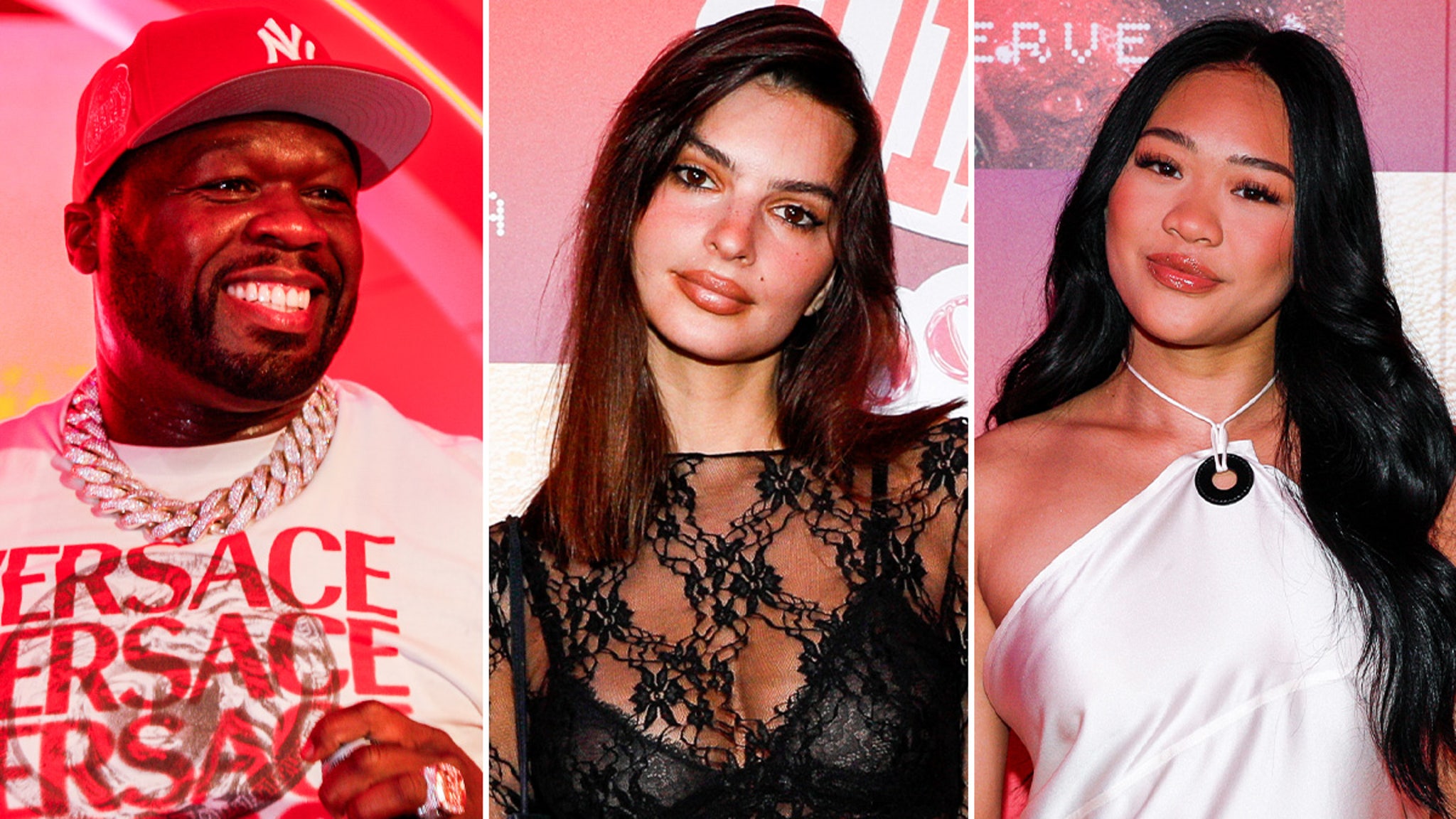
50 Cent got many men and women moving at a New York Fashion Week event Friday night … getting the crowd bumping during an event for the soda brand Poppi.
The rapper came out for a surprise performance at the event — a launch for Poppi’s new Cherry Cola flavor — playing some of his biggest hits in a Versace t-shirt and red New York cap.
50 rocked the room … then stayed to pose for pics afterwards — hanging with out with some of the biggest bold-faced names in NYC this weekend.
Emily Ratajkowski attended the party in a sheer mesh t-shirt revealing her black bra and a pair of black skinny jeans while Olympian Suni Lee arrived in a gorgeous white cocktail dress.
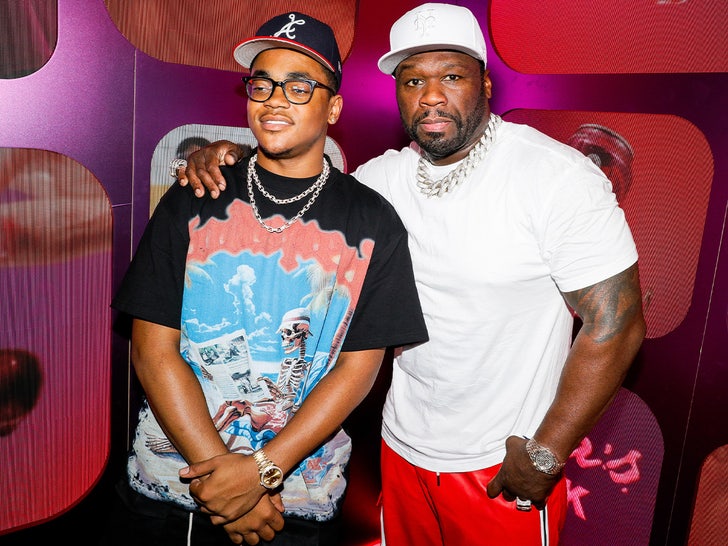
Michael Rainey Jr. — star of 50’s hit tv show “Power Book II: Ghost” — posed with the hit show’s executive producer.

And, Maria Georgas — recently embroiled in some pretty epic “The Bachelorette” drama — gave Poppi’s new flavor the kiss of approval.
Among the other bold-faced names … Jasmine Tookes, Camille Kostek, Devon Windsor, Brooks Nader, Georgia Fowler, Ari Melber, NBA star Kevin Love, beauty mogul Patrick Ta, and reality stars Lisa Barlow and Meredith Marks.
Poppi’s party kicked off a two-day pop-up in the Big Apple … opening Saturday and closing Sunday. Promising to be an immersive experience for soda lovers, there will be a ton of opportunities for fans of the brand to pick up exclusive merch and enjoy other wonderful opportunities.
Nothing like a p.i.m.p. showing getting people excited about a little soda p.o.p.
-

 Politics1 week ago
Politics1 week agoTrump impersonates Elon Musk talking about rockets: ‘I’m doing a new stainless steel hub’
-

 World1 week ago
World1 week agoBrussels, my love? Is France becoming the sick man of Europe?
-

 Politics1 week ago
Politics1 week agoTrump campaign slams Harris as 'still a San Francisco radical' after CNN interview
-

 Politics1 week ago
Politics1 week agoHarris says no regrets about defending Biden fitness for office
-
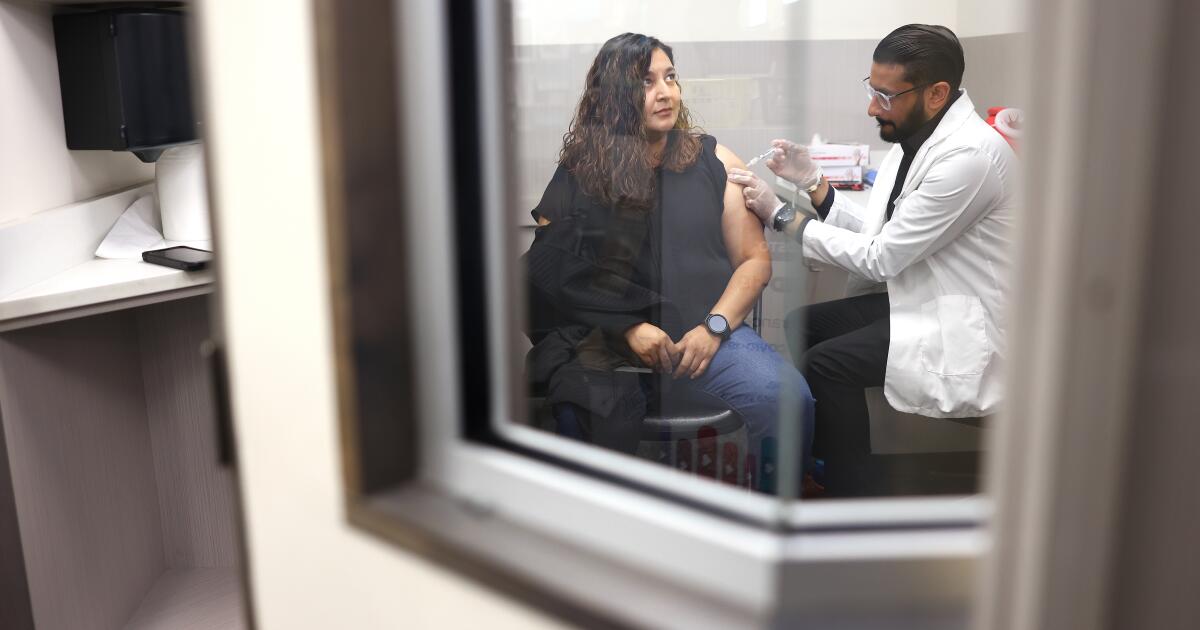
 Science1 week ago
Science1 week agoThe new COVID vaccine is here. Why these are the best times to get immunized
-

 World1 week ago
World1 week agoLocals survey damage after flooding in eastern Romania
-

 World1 week ago
World1 week agoEU rejects 'democratic legitimacy' of Venezuela's Maduro
-

 World1 week ago
World1 week agoWhy is Belgium struggling to name a European Commissioner?
